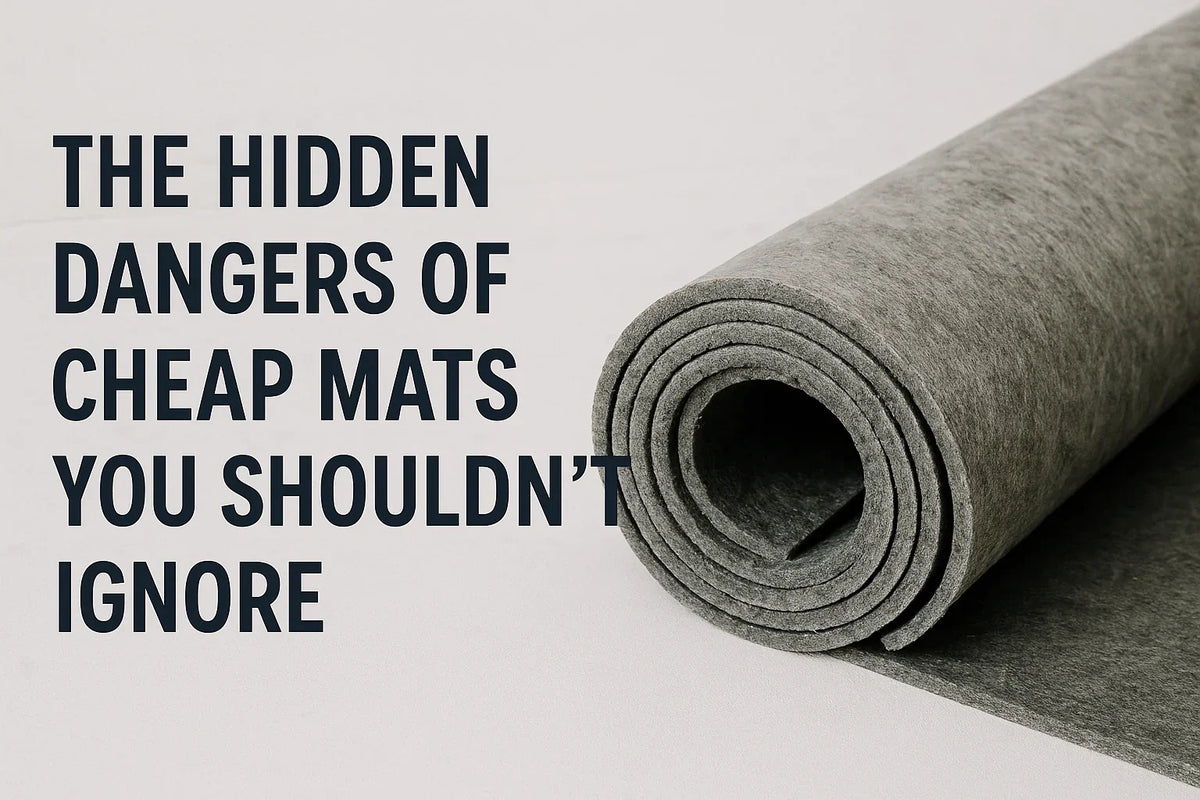The Hidden Dangers of Cheap Mats You Shouldn’t Ignore

When we think about home or business safety, floor coverings are often overlooked. But what seems like a simple purchase can actually pose hidden risks that go unnoticed until they cause a problem.
Many people buy cheap floor mats thinking they all do the same job: collect dirt and moisture, or add comfort. But not all products are created equal. Low-quality or inexpensive entrance rugs can fail at essential functions like preventing slips, trapping bacteria, or withstanding wear. Worse, they may even introduce hazards you hadn't considered.
Whether you’re a homeowner, office manager, or facility operator, understanding these hidden dangers helps you make smarter decisions for safety, cleanliness, and value. Let’s explore why investing in better flooring solutions is more important than you think.
Off-Gassing and Indoor Air Pollution from Toxic Floor Coverings
Some low-cost rugs are made using chemicals that release harmful gases over time. This process is called off-gassing, which is the release of volatile organic compounds (VOCs) into the indoor air.
These compounds can impact air quality, leading to health issues like headaches, nausea, allergies, and even long-term respiratory problems. The EPA warns that indoor air can be more polluted than outdoor air, and poorly made safety flooring only worsens the problem.
Look for GreenGuard-certified products or those marked “low-VOC,” especially in homes, gyms, schools, and offices. Using toxic door carpets around children, pets, or sensitive individuals can be a silent health risk.
How Cheap Floor Mats Can Trigger Injuries
Slip-and-fall risk is one of the biggest hazards associated with poor-quality floor runners. Many cheap coverings have thin undersides that slide on hardwood, tile, or laminate. Some curl at the edges or shift underfoot, turning into trip hazards.
In commercial spaces, these issues don’t just carry safety risks—they bring legal and financial consequences. Businesses could face liability claims if someone gets injured due to an unstable anti-slip surface. OSHA even mandates safe flooring conditions in workplaces, making non-slip industrial floor protectors essential for compliance.
Bacterial and Mold Growth
Instead of protecting people, low-quality door rugs often retain moisture without proper drainage. This creates a breeding ground for bacteria, mold, and fungi.
Research from the University of Arizona revealed that floor coverings can hold more bacteria than a typical toilet seat—especially in gyms, kitchens, and entryways. Without antimicrobial technology, these surface protectors may lead to skin irritations or respiratory infections.
Choosing quick-drying entrance rugs or antimicrobial-treated commercial flooring solutions, combined with regular cleaning, helps reduce these risks.
Short Lifespan = Higher Long-Term Costs
Buying a budget mat may seem like saving money, but it usually costs more in the long run. Cheap versions fray, fade, or crack quickly. Over 2–3 years, the cost of replacements can exceed the price of investing once in a durable, eco-friendly, recycled rubber mats.
Better alternatives last longer, reduce waste, and align with green business goals. Certifications like LEED compatibility help identify sustainable products.
Fire Hazards in Commercial and Residential Areas
Though uncommon, low-grade floor coverings made with flammable materials can ignite easily if placed near heaters, kitchens, or electrical equipment.
Workshops, restaurants, and factories should always choose fire-retardant flooring solutions that meet safety codes.
Damage to Brand Image and Customer Perception
The entryway creates the first impression for visitors. Worn-out door mats with curled edges or faded logos signal poor attention to detail.
High-quality branded flooring solutions enhance professionalism, while cheap ones damage credibility. For stores, clinics, or gyms, investing in durable entrance rugs strengthens brand reputation.
Environmental Impact of Throwaway Floor Mats
Low-quality non-recyclable coverings often end up in landfills. Because they degrade quickly, they’re discarded more often, contributing to pollution.
Eco-friendly options include:
- Coir rugs made from coconut fiber
- Recycled rubber flooring
- Biodegradable alternatives
Sustainable choices show responsibility and align with green initiatives.
Legal and Compliance Risks with Uncertified Floor Coverings
Using uncertified floor protectors may expose businesses to fines and lawsuits. Key standards include:
- ADA compliance (accessibility and reduced trip hazards)
- NFSI certification (traction safety)
- Fire resistance ratings
Always confirm certification when purchasing for public or commercial use.
More Hidden Dangers Most People Overlook
- Fatigue in Workspaces – Poor cushioning in budget standing mats causes strain. Use anti-fatigue flooring in kitchens, factories, and reception areas.
- Weak Modular Systems – Cheap snap-together floor panels shift underfoot. Heavy-duty interlocking systems are safer.
- Chemical Resistance Failures – Workshops and garages need mats rated for oil and chemical resistance.
- Noise Issues – Thin coverings fail to absorb sound in gyms or hallways. Choose sound-dampening flooring.
- UV Damage Outdoors – Low-quality outdoor mats fade or crack quickly. Use UV-stabilized runners instead.
Choosing Safe, Durable, and Eco-Friendly Flooring
Checklist for choosing the right floor covering:
- Non-slip backing for stability
- Durable top surface for dirt and moisture absorption
- Eco-friendly materials with certifications
- Anti-fatigue options for standing areas
- Modular designs for industrial use
Use coir door rugs at entrances, quick-drying options outdoors, and cushioned anti-fatigue flooring where staff stand long hours.
Conclusion: The True Cost of Cheap Floor Coverings
Cheap floor mats might seem harmless, but they often come with hidden risks—from slip hazards and bacterial buildup to fire concerns and brand damage.
High-quality commercial flooring solutions are safer, longer-lasting, and more eco-friendly. Investing in the right option is about more than looks—it’s about safety, protection, and peace of mind.
If you’re unsure which type suits your needs, explore options like entrance rugs, coir door mats, anti-fatigue flooring, modular panels, and eco-friendly commercial matting solutions.










